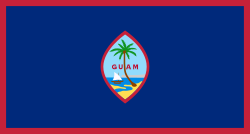#0excludeGlossary Concepcion II Compassionate Cannabis Use Act, which legalized medical cannabis for patients with qualifying conditions. The medical program allows patients to access cannabis from licensed dispensaries or grow their own plants for personal use. In 2019, Guam took a significant step forward by legalizing recreational cannabis under the Guam Cannabis Industry Act, which permits adults over the age of 21 to possess up to 1 ounce of cannabis and cultivate up to six plants.
The territory is still in the process of establishing a regulated market for recreational cannabis, with sales expected to begin in the coming years. Guam has also implemented policies aimed at social equity, ensuring that local residents and small businesses have access to opportunities in the legal cannabis industry. As Guam moves toward full implementation of its recreational cannabis market, it is positioning itself as a leader in cannabis reform in the Pacific, with a strong emphasis on public health and safety.”
Guam (/ˈɡwɑːm/ ⓘ GWAHM; Chamorro: Guåhan [ˈɡʷɑhɑn]) is an island that is an organized, unincorporated territory of the United States in the Micronesia subregion of the western Pacific Ocean. Guam's capital is Hagåtña, and the most populous village is Dededo. It is the westernmost point and territory of the United States, as measured from the geographic center of the U.S. with point Udall. In Oceania, Guam is the largest and southernmost of the Mariana Islands and the largest island in Micronesia. In 2022, its population was 168,801. Chamorros are its largest ethnic group, but a minority on the multiethnic island. The territory spans 210 square miles (540 km2; 130,000 acres) and has a population density of 775 per square mile (299/km2).
Guam Guåhan (Chamorro) | |
|---|---|
| Nickname(s): | |
| Motto: | |
| Anthem: "Kantikun Guåhan" (Chamorro) ("Guam Hymn") (regional) "The Star-Spangled Banner" (official) | |
 Location of Guam (circled in red) | |
| Sovereign state | United States |
| Before annexation | Spanish East Indies |
| Cession from Spain | December 10, 1898 |
| Capital | Hagåtña |
| Largest city | Dededo |
| Official languages | |
| Ethnic groups (2010) |
|
| Religion (2010) |
|
| Demonym(s) | Guamanian |
| Government | Devolved presidential dependency within a federal republic |
| Donald Trump (R) | |
• Governor | Lou Leon Guerrero (D) |
| Josh Tenorio (D) | |
| Legislature | Legislature of Guam |
| United States Congress | |
| James Moylan (R) | |
| Area | |
• Total | 210 sq mi (540 km2) |
| Highest elevation | 1,335 ft (407 m) |
| Population | |
• 2021 estimate | 168,801 (177th) |
• Density | 299/km2 (774.4/sq mi) |
| GDP (PPP) | 2016 estimate |
• Total | $5.8 billion |
• Per capita | $35,600 |
| GDP (nominal) | 2019 estimate |
• Total | $6.3 billion |
• Per capita | $37,387 |
| HDI (2017) | very high |
| Currency | United States dollar (US$) (USD) |
| Time zone | UTC+10:00 (ChST) |
| Date format | mm/dd/yyyy |
| Driving side | Right |
| Calling code | +1 |
| USPS abbreviation | GU |
| ISO 3166 code | |
| Internet TLD | .gu |
| Website | guam.gov |
Indigenous Guamanians are the Chamorro, who are related to the Austronesian peoples of the Malay Archipelago, the Philippines, Taiwan, and Polynesia. Unlike most of its neighbors, the Chamorro language is not classified as a Micronesian or Polynesian language. Like Palauan, it possibly constitutes an independent branch of the Malayo-Polynesian language family. The Chamorro people settled Guam and the Mariana islands approximately 3,500 years ago. Portuguese explorer Ferdinand Magellan, while in the service of Spain, was the first European to visit and claim the island in March 1521. Guam was fully colonized by Spain in 1668. Between the 17th and 19th centuries, Guam was an important stopover for Spanish Manila galleons. During the Spanish–American War, the United States captured Guam in June 1898. Under the 1898 Treaty of Paris, Spain ceded Guam to the U.S. effective April 11, 1899.
Before World War II, Guam was one of five American jurisdictions in the Pacific Ocean, along with Wake Island in Micronesia, American Samoa and Hawaii in Polynesia, and the Philippines. On December 8, 1941, hours after the attack on Pearl Harbor, Guam was captured by the Japanese, who occupied the island for two and a half years before American forces recaptured it on July 21, 1944, which is commemorated there as Liberation Day. Since the 1960s, Guam's economy has been supported primarily by tourism and the U.S. military, for which Guam is a major strategic asset. Its future political status has been a matter of significant discussion, with public opinion polls indicating a strong preference for American statehood.
Guam's de facto motto is "Where America's Day Begins", which refers to the island's proximity to the International Date Line. Guam is among the 17 non-self-governing territories listed by the United Nations, and has been a member of the Pacific Community since 1983.
Guam is called Guåhan by Chamorro speakers, from the word guaha, meaning 'to have'. Its English gloss 'we have' references the island's providing everything needed to live.
Indonesian
Pronunciation
- (Standard Indonesian) IPA(key): /ˈɡuam/ [ˈɡu.am]
- Rhymes: -am
- Syllabification: gu‧am
Etymology 1
Inherited from Malay guam (“lawsuit; dispute; conflict; disagreement”), from Thai ความ (kwaam, “affair, matter, lawsuit”).
Noun
guam (plural guam-guam)
- (dated) dispute; conflict; disagreement







